
| Publisher: | Knopf | |
| Genre: | Women, War & Military, Literary, Fiction | |
| ISBN: | 9781101947395 | |
| Pub Date: | September 2018 | |
| Price: | $22.95 |
| Starred | Fiction |
by Elliot Ackerman
Narrated from the grave by a marine killed in the same IED attack that left Eden Malcom an intermittently conscious, skin-torched, dismembered, vision- and hearing-compromised survivor, Waiting for Eden tells of his wife Mary's three-year bedside vigil holding on to the thread of life. Her refusal to take him off life-support alienates his siblings, who hold a symbolic memorial service and move on. Even the stoic nurses at the San Antonio VA hospital shudder to care for this patient: "Not alive, not dead, what it was didn't have a name... it was man suffering into the anlage of whatever came next."
National Book Award finalist Elliot Ackerman's unusual choice of a dead comrade to narrate his spare tale allows for unobtrusive flashbacks fleshing out the history of Mary and Eden's life. We learn of his first deployment, their early dating and marriage, her desire for a child, his war-driven impotence and the narrator's brief affair that impregnates Mary. When Eden's condition deteriorates to the point where Mary is ready to let him go, his training in prisoner communication by coded taps opens a window of connection. She hesitates until it is clear that he is messaging her to "end, end, end"--the signal of a desire to "tap out." The narrator patiently waits for her decision to release his fellow Marine to the limbo of post-death "whiteness." What comes next is unknown. Waiting for Eden is a tight, intense story of loyalty, guilt and suffering that belies its brevity. Ackerman (Dark at the Crossing) has crafted another prismatic window into the long-lasting agony of war. --Bruce Jacobs, founding partner, Watermark Books & Cafe, Wichita, Kan.

| Publisher: | Archipelago | |
| Genre: | General, Literary, Biographical, Fiction, Historical | |
| ISBN: | 9780914671992 | |
| Pub Date: | September 2018 | |
| Price: | $33 |
| Fiction |
by Karl Ove Knausgaard, trans. by Martin Aitken, Don Bartlett
In a weighty finale to his epic My Struggle series, Karl Ove Knausgaard turns to the recent years of his life in book six. In Part 1, Knausgaard copes with his own doubts and his uncle's anger over the contents of My Struggle: Book One. In Part 2, Knausgaard conducts a close reading of Nazism and the dark corners of the human soul, daring to connect Hitler with his own work. Finally, Part 3 rejoins Knausgaard's family years later, as he grapples with his wife's deepening depression.
While each book in the six-volume series has had its share of meta-textual elements, this final installment explodes any remaining barriers to address the publication of its own pages. Knausgaard maintains all the hypnotic clarity and propulsive insights that attracted past readers, but adds a new layer of literary and philosophical scholarship into literature's most defiled achievement: Mein Kampf. In doing so, he confronts key thematic questions that have stitched each book together: questions of reality versus fiction, what it means to write and where the divide exists between the individual and the collective. For all its dizzying fatalism and pulsing anxiety, the book's musings ultimately inspire with a spiritual perspective, arguing "the loss of identity in the mass [is] merely ostensible, for the number of stars or the number of grains of sand is not infinite, but finite, and only from a distance are they the same, seen up close each grain of sand is different, each star unique." By the end, the reader, like the writer, experiences an existential exhaustion that is as emptying as it is revelatory. --Alice Martin, freelance writer and editor

| Publisher: | Penguin Books | |
| Genre: | Short Stories (single author), General, Literary, Fiction, Historical | |
| ISBN: | 9780143133049 | |
| Pub Date: | October 2018 | |
| Price: | $16 |
| Fiction |
by Simon Van Booy
In The Sadness of Beautiful Things, British-born and Brooklyn, N.Y., resident Simon Van Booy offers eight short works that focus on a host of ordinary people who suffer devastating life losses, but find ways to go on--dramatically changed.
Each of these haunting, at times mystical, fictions are, at their core, love stories in every conceivable sense of the word. A daughter tells of her absent, volatile father and the lengths her long-suffering, yet forgiving mother ultimately goes to for their star-crossed relationship. Familial love takes center stage when the mental deficiencies of old age lead an unfeeling father into a labyrinthine depression, and his devoted wife and their daughter connect with an eye doctor in Chinatown who offers a remedy.
"Not Dying," the longest and most inventively told story in the collection, probes a father's love for his wife and daughter--and their lives' meaning and purpose--amid impending fears of the apocalypse. Meanwhile, the kindness and loving generosity of strangers are central to another tale, about a mysterious shut-in with a heartbreaking past, who becomes an anonymous benefactor to a struggling family in town.
Van Booy is a wise, philosophical writer. His spare prose is incredibly illuminating and is further enhanced by unexpected resolutions that allow graceful themes to expand and flourish. What makes this collection all the more compelling is that Van Booy claims to have based most of the tales on true stories, told to him over the course of his travels. The dark, sad circumstances that germinate each of these poignant, unpredictable gems will lead readers to refreshing glimpses of transcendence and hope. --Kathleen Gerard, blogger at Reading Between the Lines.

| Publisher: | MCD/Farrar, Straus & Giroux | |
| Genre: | Horror, General, Literary, Supernatural, Thrillers, Fiction | |
| ISBN: | 9780374110444 | |
| Pub Date: | September 2018 | |
| Price: | $15 |
| Fiction |
by Shirley Barrett
Australian author Shirley Barrett (Rush, Oh!) takes readers on an arrestingly dark and hilarious journey to a bizarre small town in Australia and through a young woman's growing madness.
She survived breast cancer, but Eleanor Mellett is unprepared for life after the battle, an aggravating maze of humorless support groups, post-mastectomy dates with insensitive men and thoughtless comments from her friends. Needing an escape, Eleanor finds a job teaching primary school in the town of Talbingo, population 241--actually, 240, since the previous teacher, Miss Barker, skipped town in the middle of the night. Her disappearance made little sense considering her alleged devotion to her students, but Eleanor is in no position to look a gift horse in the mouth.
In a private blog, she chronicles her increasing bemusement at Talbingo, where she learns there is no cell signal. She has a run-in with a priest who tries to exorcise her, a teen student who ogles her and a volatile relationship with the local bad boy who may or may not have had an affair with Miss Barker. Beginning to suspect her predecessor may not have left town of her own free will, Eleanor also slides into drinking and outbursts of uncontrollable anger. Perhaps something is rotten in Talbingo, or perhaps the fault lies in Eleanor's own mind.
Written in Eleanor's snarky, seething voice, this warped gem will throw readers off-balance with its mix of horror and humor. A raw exploration of grief and illness woven into a more traditional horror story, The Bus on Thursday will chill readers across the board. --Jaclyn Fulwood, blogger at Infinite Reads
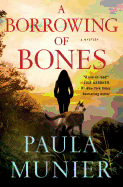
| Publisher: | Minotaur Books | |
| Genre: | Police Procedural, Mystery & Detective, Fiction, Women Sleuths | |
| ISBN: | 9781250153036 | |
| Pub Date: | September 2018 | |
| Price: | $26.99 |
| Mystery & Thriller |
by Paula Munier
In her fiction debut, A Borrowing of Bones, Paula Munier (The Writer's Guide to Beginnings) introduces retired Corporal Mercy Carr and her bomb-sniffing dog, Elvis. Both human and dog share a special bond with Elvis's handler, Sergeant Juan Miguel Pedro Martinez. When he dies in the line of duty in Afghanistan, Mercy and Elvis suffer a heavy emotional loss in addition to their physical wounds incurred during the same duty. Mercy promised the dying Martinez that she'd take care of his dog, so she arranges to take Elvis back to Vermont where they can focus on healing, inside and out.
In Vermont, the pair hike the quiet woods, meditate and bond. But Fourth of July weekend brings an unexpected commotion to their newfound calm. Mercy and Elvis discover an abandoned baby in the forest; game warden Troy Warner and his search-and-rescue dog, Susie Bear, respond to Mercy's 911 call. And when Mercy takes the pair to where she and Elvis found the infant, the two working dogs unearth an even bigger surprise.
Munier's multi-layered plot takes Mercy and Troy through the wilderness, the art world, a cat-infested crime scene and numerous dog-friendly restaurants. The small town possesses its fair share of delightful characters, including Patience, Mercy's grandmother and the local veterinarian. And it isn't wanting for evil crime suspects either. While some of the dog details may not sit well with canine enthusiasts, like an experienced dog handler treating another dog without established permission, the overall novel is an entertaining, escapist retreat. --Jen Forbus, freelancer
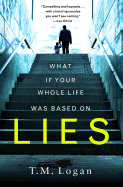
| Publisher: | St. Martin's Press | |
| Genre: | Psychological, Crime, Suspense, Thrillers, Fiction | |
| ISBN: | 9781250182265 | |
| Pub Date: | September 2018 | |
| Price: | $27.99 |
| Mystery & Thriller |
by T.M. Logan
It had been an ordinary day for Joe Lynch, and he expects it to be a normal evening, until his four-year-old son spots his wife's car headed in the opposite direction from their home. Joe decides to follow Mel and discovers she's gone to a hotel, where he finds her deep in conversation with the husband of her college friend. He begins to put two and two together and doesn't like the result. When the man disappears and is presumed dead, Joe questions everything he's ever known about his marriage and wife as he navigates a cat-and-mouse game as chief suspect.
In this fast-paced debut by T.M. Logan, readers are dropped into a swirling mix of lies upon lies where unreliable narrators abound and social media, text messages and cell phones play an integral part in the moves and countermoves of all the characters involved in this game of deception and deceit. The action is swift, the dialogue flows and the emotions run deep as Joe tries to figure out how his world unraveled so quickly. This is a tense suspense thriller with a surprising and satisfying ending, a whodunit of the best kind as it twists and turns, creating layers upon layers of storyline. Logan provides a highly sympathetic character in Joe, as he falls deep into a web of dishonesty, duplicity and shams. Perfect reading for a hot summer day, Lies will keep you guessing until the very end. --Lee E. Cart, freelance writer and book reviewer
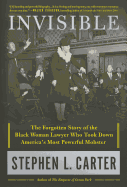
| Publisher: | Holt | |
| Genre: | Biography & Autobiography, Personal Memoirs, Lawyers & Judges, Social Science, African American Studies - General, Cultural, Ethnic & Regional, African American & Black, Ethnic Studies | |
| ISBN: | 9781250121974 | |
| Pub Date: | October 2018 | |
| Price: | $30 |
| Starred | Biography & Memoir |
by Stephen L. Carter
Few people know that a black female lawyer, Eunice Hunton Carter, was a vital part of the team that took down notorious New York mobster Lucky Luciano in the 1930s. Fewer still know the story of her remarkable life. The granddaughter of slaves and a graduate of Smith College, Eunice was whip-smart, ambitious and determined to rise above the expectations for black women of her day and time. Her grandson, author and law professor Stephen L. Carter (The Emperor of Ocean Park), paints a detailed portrait of his formidable Nana in the insightful biography, Invisible.
Eunice began practicing law in New York City and even ran for state office. But her career took off when she began working for Special Prosecutor Thomas E. Dewey, the future governor and presidential candidate who was determined to tackle organized crime in the city. Eunice, the only woman and the only black person on Dewey's team, provided essential information and strategy that led to Luciano's conviction. Despite her contributions, Eunice was repeatedly passed over for promotions, but she never gave up, continuing to juggle multiple roles as a lawyer, an activist, a politician and a noted Harlem hostess.
Carter's narrative reads at times like a legal thriller, as he traces the ins and outs of the case against Luciano and other high-profile cases Eunice later handled. This is not merely a courtroom account, though: it is the story of the life of a complicated woman. Meticulously researched and compelling, Invisible is at once a fascinating slice of New York legal and racial history and a thoughtful portrayal of a woman who refused to be hidden. --Katie Noah Gibson, blogger at Cakes, Tea and Dreams

| Publisher: | Atria | |
| Genre: | Biography & Autobiography, Literary Figures, Music, Rap & Hip Hop, Genres & Styles, Personal Memoirs | |
| ISBN: | 9781501169397 | |
| Pub Date: | September 2018 | |
| Price: | $26 |
| Biography & Memoir |
by Juan Vidal
Writer, musician and NPR cultural critic Juan Vidal makes an inspiring debut with his memoir, Rap Dad: A Story of Family and the Subculture that Shaped a Generation.
He recounts his turbulent youth growing up Latino in Miami in the 1980s and '90s. His parents were Colombian immigrants--with problems of their own--and Vidal and his friends got into all sorts of trouble that involved drug use, vandalism and other minor crimes. It was during these formative years that he discovered the power of rap music, "loud and savage and free, like us." Vidal reminisces about his youthful ambitions when he formed a rap group and toured around the world, trying his best to build a music career.
That music criticism eventually became his forte is no surprise. He balances his memoir with passionate and insightful critiques of the various rap artists who influenced him--Wu-Tang Clan, Public Enemy, Jay-Z, Nas. The main focus of Rap Dad, though, is on parenting, as Vidal describes his challenges as a father. Candidly and painfully he recalls his father's shortcomings and how, as a young man, Vidal turned to rap music for male role models. His best criticism in the book breaks open the racist myth that black and Latino men are bad fathers. Besides offering substantive research to make his point, he discusses many rap artists who are nobly engaged in fatherhood. "I've come to know that great artists, like great parents, can be the best mirrors for us all," Vidal concludes.
Rap Dad is not only entertaining, it is socially and politically important for the way it challenges stereotypes. --Scott Neuffer, writer, poet, editor of trampset

| Publisher: | Crown | |
| Genre: | United States, Strategy, General, History, Military | |
| ISBN: | 9780307409607 | |
| Pub Date: | October 2018 | |
| Price: | $35 |
| History |
by Michael Beschloss
Harry Truman often cited James Polk among his favorite presidents because Polk "regularly told Congress to go to hell on foreign policy matters," writes Michael Beschloss in Presidents of War. Such bravado would have rattled the Founding Fathers, who intended that the power to declare war rest solely with Congress, rather than the president. However, Polk's stance during the Mexican War reflects the beginning of a transformative shift, one adopted by commanders-in-chief during the modern nuclear age.
Presidents of War traces the arc of this fundamental change by focusing on the approaches to war taken by Jefferson, Madison, Polk, Lincoln, McKinley, Wilson, Franklin Roosevelt, Truman and Lyndon Johnson. Beschloss (The Crisis Years: Kennedy and Khrushchev, 1960-1963) expertly assesses and analyzes each leader's motivations, degree of honesty with the public, level of cooperation with Congress and treatment of civil liberties. As for Congress, Beschloss states, relinquishing the power to engage in war resulted in sending "an unintended message to later presidents that when they ask the House and Senate for war, those commanders-in-chief could be duplicitous, too."
Beschloss's style is to present a complicated dynamic in a well-researched but easy-to-read monograph, and Presidents of War succeeds in this mission. He captures nearly 150 years in a single volume, from Jefferson's attempts to prevent war with France or England up to the Vietnam War, with brief discussion of the Gulf Wars. For each conflict, Beschloss provides an engaging look at how and why the dramatic pendulum swung, and of the leaders who helped change its--and the country's--direction. --William H. Firman Jr., presidential historian and writer

| Publisher: | Penguin Books | |
| Genre: | Life Sciences, Nature, Neuroscience, Animals, Science, General, Biology, Zoology - General | |
| ISBN: | 9780143131410 | |
| Pub Date: | October 2018 | |
| Price: | $16 |
| Nature & Environment |
by Matt Simon
"This is going to get weird." Depending on one's thoughts regarding zombies, Matt Simon's declaration about the chilling scenarios described in Plight of the Living Dead can be good news or bad news. Regardless, there is no denying that his examination of nature's zombifiers is utterly engrossing (no pun intended). A science and tech writer for Wired magazine, Simon's job is to tell the stories of those who dedicate their lives to science in a way that makes sense to the rest of us. Again, fortunately or unfortunately, he plies his trade marvelously.
Tales of emerald wasps performing brain surgery on cockroaches (to use them as incubators, naturally) might freak out mere mortals. Simon, however, gleefully reveals myriad "diabolical and horrifying" ways organisms have evolved to maximize the perpetuation of their species. One fungus subjects ants to mind control as a means to infiltrate more real estate. And a certain worm variety cuts off the oxygen supply in moose; another lives inside crickets, boring a hole in the exoskeleton to check for water.
Assuming control over a host's mind or body feels like a Hollywood screenplay, but the physiology of the truth is almost too bizarre for fiction. One may not want to conjure up what Simon depicts, but his splendid narrative voice can't help but evoke an enthralling documentary. Conversational and engagingly funny ("There is no dying peacefully in sheets with high counts"), Simon captures the reader's mind like a wasp larva virus in a ladybug. --Lauren O'Brien of Malcolm Avenue Review
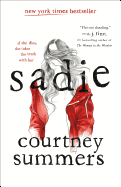
| Publisher: | Wednesday Books/Macmillan | |
| Genre: | Dating & Sex, Romance, Contemporary, Girls & Women, Social Themes, Thrillers & Suspense, Young Adult Fiction | |
| ISBN: | 9781250105714 | |
| Pub Date: | September 2018 | |
| Price: | $17.99 |
| Starred | Children's & Young Adult |
by Courtney Summers
Sadie begins, "as so many stories do, with a dead girl."
Cold Creek, Colo., is the kind of town "that's only good for leaving." In October, a local resident found the body of 13-year-old Mattie Southern, who had been reported missing three days earlier. "Mattie left behind a nineteen-year-old sister, Sadie; a surrogate grandmother, May Beth; and her mother, Claire; but Claire's been out of the picture for a while." When Claire, an addict, left the girls three years ago, Sadie quit high school and dedicated herself to raising Mattie. "It broke Sadie, Mattie's murder," and it burned that the murderer was never found. Then, Sadie disappeared. As far as May Beth knew, Sadie was simply gone. But in fact, she went on a mission to find and kill the man she believed responsible for Mattie's death. In July, Sadie's car was found; Sadie was not.
Courtney Summers's (All the Rage) gripping young adult novel is told in two parts: Sadie's first-person narration of the events that begin with her leaving Cold Creek; and a Serial-like podcast, narrated by host West McCray, that tries to piece together what happened to Sadie. Sadie's journey is punishingly hard--she has little money, a stutter that makes questioning people difficult and only a deep well of pain to keep her moving. The slow revelation of information combined with the close-but-not-overlapping timelines create a sense of both urgency and immediacy: Sadie must find the murderer; West McCray must find Sadie. Haunting, captivating and full of surprising moments of beauty, Sadie leaves a mark on the reader and will open eyes to how very many stories begin with, end with or are wholly about "a dead girl." --Siân Gaetano, children's and YA editor, Shelf Awareness
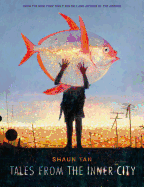
| Publisher: | Arthur A. Levine/Scholastic | |
| Genre: | Animals, General, Short Stories, Lifestyles, Young Adult Fiction, City & Town Life | |
| ISBN: | 9781338298406 | |
| Pub Date: | September 2018 | |
| Price: | $24.99 |
| Children's & Young Adult |
by Shaun Tan
In Tales from the Inner City, Shaun Tan (The Singing Bones) perfectly illuminates the sometimes symbiotic, sometimes parasitic relationships between animals of various species, with an emphasis on those that include human beings.
In this collection of 25 untitled short stories and poems, Tan imagines existences for animals in inner cities, giving special attention to the curious distance or extreme closeness humans maintain with other animals. A poem features one of the oldest friendships, that between human and dog, and examines the joy of finding companionship, as well as the pain of deep, unsettling loss. A series of illustrations of the same scene in different settings--dog and owner in tundra, war zone, meadow, desert--interrupts verses of the poem, the ending showing the beauty of reconciliation. Many of the stories, like the animals within, form a synergistic bond. One tells about the annihilation of generations when a great shark-like creature is slaughtered; the other tells about the salvation of generations when the fish's roe sack is released into the inky waves of the atmosphere. "The only place left for a fish... the only untouched openness with any tide or current," Tan writes, "well, it's the sky."
With the "names" of each short story or poem marked by the silhouettes of numbered beasts before the epigraph of the book, Tan's brilliant illustrations thread together these haunting pieces. Tan's full-page spreads of the last rhinoceros against a background of bumper-to-bumper traffic and of yellow eyes beaming out from the face of a snowy owl are just two of the evocative illustrations that accompany these prescient and apocalyptic works. Tales from the Inner City is a nuanced, emotional look at animals who were here pre-human settlement, who will be here after--and those who won't. --Breanna J. McDaniel, author, freelance reviewer